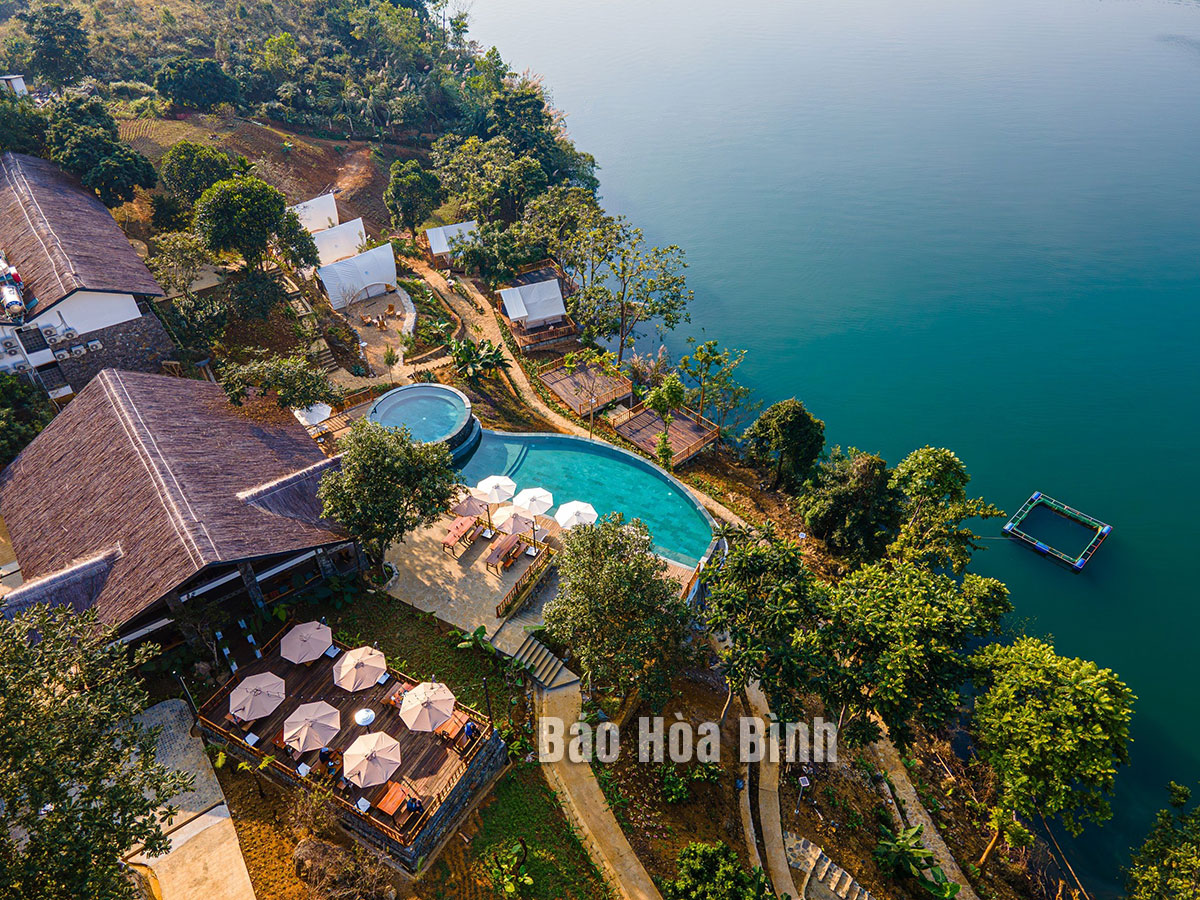
Despite starting to develop tourism later than some other localities, with the potential described as having both "Sa Pa and Ha Long Bay” in the midst of mountains as well as a typical cultural identity and a new direction, Da Bac district is gradually winning the hearts of travellers.

A high-end and modern resort attractive to tourists in
Vay Nua commune, Da Bac district.
At present, though Da Bac has yet to be truly
popular on the tourism map of Vietnam, such local names as Sung and Da Bia
hamlets, Lord Thac Bo Temple, or some resorts like Mo Village, Vayang Retreat,
Maida Lodge, and Xoan Retreat have proved attractive to travel lovers.
Ban Kim Quy, Vice Chairman of the Da Bac
People’s Committee, said that instead of rushing to tourism development that
may ruin natural landscapes, the district opted to capitalise on its advantages
in agriculture, rural areas, culture, and ecological environment. It has
shifted from pure agricultural production to agricultural economy connected
with developing services and tourism in the vicinity of Hoa Binh Lake so as to
gradually improve the quality of residents’ material and spiritual lives.
He noted Da Bac is focusing on equipping locals
with tourism skills and, especially, recovering, preserving, and bringing into
play ethnic groups’ traditional cultures to sustainably develop tourism and
generate high economic benefits.
There are now 30 accommodation establishments
across the district, including 18 homestay facilities, 11 hotels, and one
two-star hotel. Da Bac welcomed 170,100 tourist arrivals and earned over 80 billion
VND (3.1 million USD) in tourism revenue last year. Both figures increased
during the first half of 2024 compared to the same period of 2023.
Da Bac targets more than 550,000 visitors and
165 billion VND in tourism revenue in 2025. It looks to raise the respective
figures to over 660,000 and 198 billion VND by 2030, Quy added.
Nguyen Van Toan, Standing Vice Chairman of the
Hoa Binh provincial People’s Committee, said Hoa Binh Lake spans five
district-level localities, of which Da Bac is home to the largest water surface
area. The lake has met three of the five criteria for a national tourism area –
a status the province hopes to secure by 2030.
Sixteen service, culture, and tourism investment
projects in the lake’s vicinity have been licensed or granted investment
certificates so far. They cover about 1,444ha of land and have total investment
of over 3.3 trillion VND. The projects aim to meet tourism, relaxation, and
entertainment demand at the same time with planting and protecting forest and
preserving culture.
The provincial administration will strongly
direct relevant agencies and sectors to provide maximum procedural assistance
for the projects to be carried out on schedule. Besides, authorities will also
exert efforts in completing transport, tourism, and communication
infrastructure to create momentum for the accommodation system and tourism
products to develop quickly and contribute to local growth, Toan remarked.
A diverse chain of eco-tourism and resort destinations concentrated in Hoa Binh city and the districts of Tan Lac, Da Bac, and Luong Son… Along with the launch of several key high-quality resort tourism projects, these developments have reshaped the landscape and enhanced the appeal of Hoa Binh as a travel destination.
Boasting diverse terrain, a mild climate, and rich natural resources, Cao Phong district is increasingly asserting its place on Vietnam’s tourism map, attracting both domestic and foreign visitors. The district is renowned for its stunning landscapes, majestic mountains, a crystal-clear hydropower lake, and the unique cultural identity of local ethnic groups.
With its pristine landscapes, unique cultural heritage of Muong ethnic minority, and an expanding range of visitor experiences, Tan Lac district of Hoa Binh has fast become a captivating destination for both domestic and international tourists.
Until now, Sung village in Cao Son commune, Da Bac district remains the only Dao ethnic community in Hoa Binh province to develop a community-based tourism model. Beyond its untouched natural landscapes, cultural identity serves as the cornerstone attraction for visitors.
Alongside the diverse cultural identities of the Kinh, Muong, Tay, Thai, Dao, and Mong ethnic people, Hoa Binh province is also renowned as the "capital" of the northwestern Vietnamese cuisine, offering unique and distinctive dishes. At festivals, during Lunar New Year (Tet), or on significant family or community occasions, special dishes are prepared, leaving a lasting impression on visitors.
A Phong Linh (Yellow Tabebuia) flower garden in Thang village, Thach Yen commune, Cao Phong district is currently in full bloom, drawing a large number of visitors.



